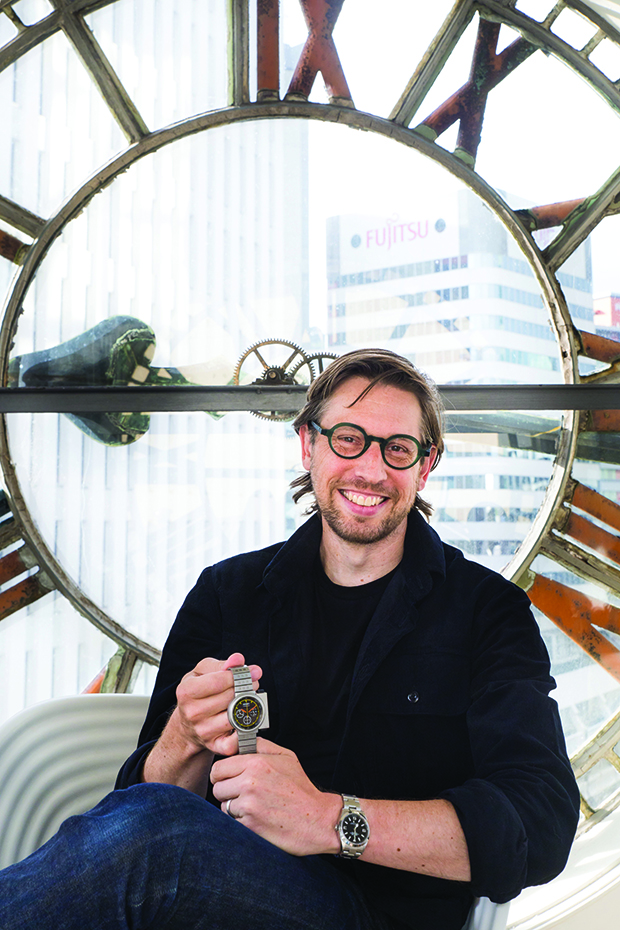Why this Wellington man collects wonderful watches

Watches are worn for more reasons than timekeeping. Meet a collector who finds meaning in the ticking of a hand.
Words & photo: Chris van Ryn
There are roughly three billion seconds in a human lifetime. Wellington watch collector Conrad Smith is more aware of them than most. In his youth, he became enchanted with the small, mechanical objects, graceful in form and movement, that measure increments of time with remarkable precision.
And they represented the kind of success to which he aspired. The watches that attracted him then — and now — were worn by people he admired: Ian Fleming, David Attenborough and Sir Edmund Hillary among them. On the Everest climb, Hillary took a Rolex Oyster Perpetual, on which Rolex based its famous Explorer.
“The Explorer became the watch that defined what it was to be an adventurer and to discover new things and to reach new heights.”
Conrad’s design sensibility and aesthetic appreciation runs in the family. He works as a digital product designer; his father, Neal, is a furniture designer. Conrad lives with his wife Kat and daughter Olive in a house designed one of New Zealand’s most significant architects, the late Ian Athfield.
“You surround yourself with things you identify with that are important to you. Sometimes, objects hold memories or become tokens you can look back to and say, ‘that reminds me of a time when a particular thing happened.’
He points to the Rolex Explorer he’s wearing. “I’d been on a waiting list for this for months. Finally, I got the call. I drove into the city and collected it. Kat was pregnant at the time, and the very next day, Olive arrived. This watch is a reminder of that moment and connects me to that memory.”
Watches weave together art, science and technology. Then, there is understanding time itself. What is it, and how does it work? “There’s something poetic and ethereal at work.”
Time is outside the perception of the senses. It can’t be seen, tasted or touched. But it’s there. It impacts everyone. Watches harness a kind of magic pulse. A watch makes visible something that is invisible. The wind isn’t detectable, but leaves of trees move. In a watch, time can be seen “moving” the second hand.
“Delve further, and that’s when you dive into concepts of time being linear,” says Conrad. “How do we measure it? How did we decide to break it down into a 24-hour day, which we then display on a watch face?”
Time is based on a solar cycle unique to Earth. And it changes all the time. Whenever an earthquake happens, the rotation of the earth varies by a fraction of a second. “It’s fascinating. The moment you step outside of the earth, how we’ve defined time is irrelevant.”
Life, Conrad says, can seem very chaotic and random. It can be difficult to make sense of things day to day. “But certain patterns, rhythms and cycles give some structure. They help us make sense of the world. I feel like watches capture that structure. They give you a sense of agency and a level of control.”
There’s a scientific rigour about measuring and keeping track of time. But the reality, says Conrad, is that everyone perceives time differently. “My first 10 years of life took forever. The past 10 years — they just disappeared. Yet, I’m the same person, and it’s the same scientific definition for each year.
“I’m in constant debate: should I be relaxing because it’s important to unwind and forget about what day it is, versus I have to be productive because there are only so many hours in the day?”
Conrad selects watches according to their aesthetics: balance, proportion and shape. He’s interested in a watch’s narrative and provenance: who wore it and when, who designed it and why. And the mechanics: does it have any engineering innovations?
“This,” he says, reaching into a glass-fronted display box, exposing glimpses of half a dozen faces, “is a Grand Seiko. It has a spring-drive calibre, combining the motive force of a mainspring with the high precision of a quartz watch.”
The spring drive generates energy like every other luxury mechanical watch. But it combines this with an electronic quartz oscillator to deliver precision that no mechanical watch can match.
“The second hand of the Grand Seiko has no interval. No tick, tick, tick. It simply glides around the dial in a continuous movement. It’s like mimicking the natural flow of time.
“To me, that feels like poetry.”
Love this story? Subscribe now!
 This article first appeared in NZ Life & Leisure Magazine.
This article first appeared in NZ Life & Leisure Magazine.
